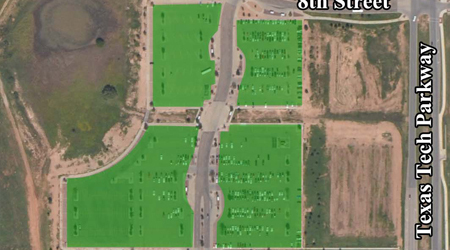Most Top Problems Facing Machine Learning in The Forest Industry?
 By Anolytics | 28 March, 2022 in Satellite Imagery | 3 mins read
By Anolytics | 28 March, 2022 in Satellite Imagery | 3 mins read

In the forest business, satellite imagery is used with GIS data for geographic mapping and analytics. Still, as satellite imagery becomes more widely available and inexpensive, new applications will arise. As a result, firms should be aware of potential applications beyond the standard mapping functionality that most forest companies are used to.
Meteorologists, town planners, researchers, students, forestry, oceanography, and geoscience professionals utilize satellite imagery as one of their most potent tools. They act as though they are eyes in the sky, transmitting data. These data can be used for remote sensing and other valuable reasons.
Satellite imaging is one of the fastest developing geospatial technologies. Due to rising competition in this market, the quality of satellite imagery datasets are improving, and the acquisition cost is decreasing.
Satellite image datasets containing important information on tagged items are utilized for urban management and planning, and smart city development. And data annotation firms active in image, text, and video annotations can produce such satellite image datasets deep learning for supervised machine learning.Monitoring of Forest Resources and Activities
Satellite imagery is an excellent data source for typical remote sensing applications like object recognition and classification. Neural Network-based satellite image datasets deep learning systems can recognize characteristics and detect changes in flora, landforms, and structures.
Although it’s unclear whether extremely high-resolution photography would perform better (given higher statistical significance) in this regard, medium and high-resolution imaging tend to produce relevant results for the vast majority of use cases.
New services and companies are emerging as commercial satellite imagery becomes more widely available, which might significantly influence the forestry profession.
Machine Learning Algorithms Used in Forestry
I won’t get into the technical intricacies of these algorithms, but here’s a summary of some of the more frequent ones used in machine learning applications. A handful of them will be familiar to foresters from their statistics classes.
- Linear Regression
- Logistic Regression
- Decision Trees
- Random Forests
- Support Vector Machines
- Naive Bayes
- K-nearest Neighbors
- K-means Clustering
- Gradient Boosting
Use Cases in Forestry
Machine learning, a form of artificial intelligence, is becoming more widely used in fields like forest ecology. We examine and analyze the uses of three regularly used machine learning (ML) approaches, including decision-tree learning, artificial neural networks, and support vector machines, in four distinct elements of forest ecology over the previous decade. Among them are:
- Species distribution methods
- Carbon cycles,
- Risk assessment and forecasting
- Various forest management applications.
Although machine learning techniques are effective for categorization, modeling, and forecasting in forestry research, the scarcity of sufficient training data for satellite imagery and the comparatively “higher threshold” of applications impede the continued growth of ML technologies.
Anolytics.ai provides image annotation services to annotate satellite images for machine learning and AI projects. We give satellite image datasets deep learning and training data for satellite imagery built using image annotation techniques such as bounding box annotation, semantic segmentation annotation, and polygon annotation for various sorts of object recognition for AI models such as drones.
Challenges
To wrap off, I’d want to discuss some of the issues machine learning in forestry faces. One of the main difficulties in a recent study is a lack of sufficient training data for satellite imagery, which prevents machine learning from being widely used in forest ecology.
These models demand more data than typical process-based models, resulting in higher collecting, storage, and processing costs. This potential has been aided by the growing availability of high-resolution satellite imagery datasets deep learning, which has proven to be a trustworthy data supply for machine learning models. Regardless, data collection and maintenance continue to be costly.
Another issue is forestry experts’ lack of interest in and/or knowledge of machine learning methods that can hamper the overall model.
Also Read: Role of Image Annotation in Applying Machine Learning for Precision Agriculture.
Solution
To address the current issues in agriculture and forestry, there is a tremendous demand for near real-time monitoring of forests and crops.
Every year, the globe emits around 36 billion tonnes of CO2. Forests are a valuable resource for lowering emissions. Stopping deforestation, restoring forests, and improving forestry practices may remove up to 7 billion tonnes of CO2 from the atmosphere each year at a low cost. As a result, forests are an essential part of the fight against climate change and a valuable resource that must protect.
To address the current issues in agriculture and forestry, there is a considerable need for forest and agricultural monitoring. Near-real-time monitoring is essential for responding to severe events, such as climate change or insect infestations, reducing their impact, and optimizing management approaches, such as precision agriculture, sustainably.
please contact our expert.
Talk to an Expert →
You might be interested

- Satellite Imagery 13 Jul, 2020
AI Applications for Satellite Imagery: How Satellite Imagery Datasets Are Used
Satellite images can capture the wide-angle viewing area from the distant height making it easier for artificial intelli
Read More →